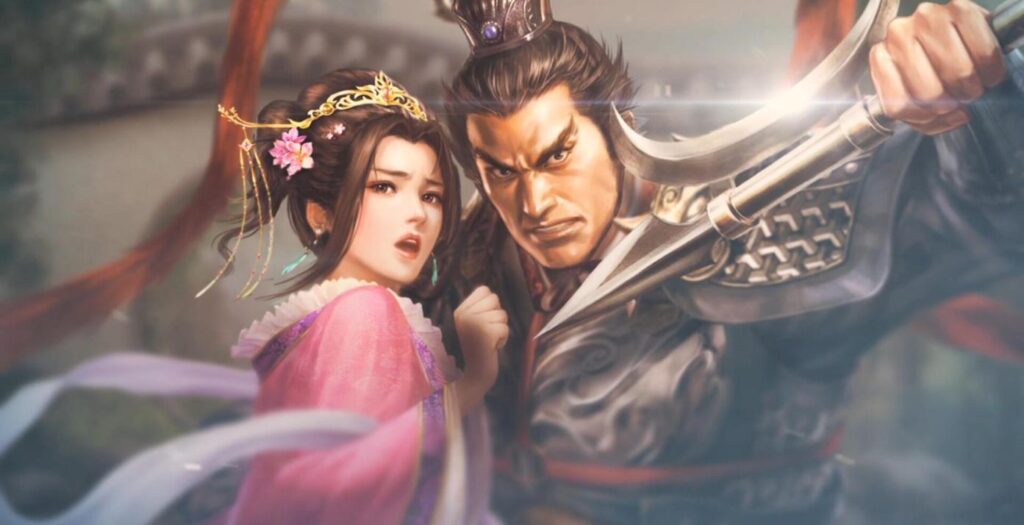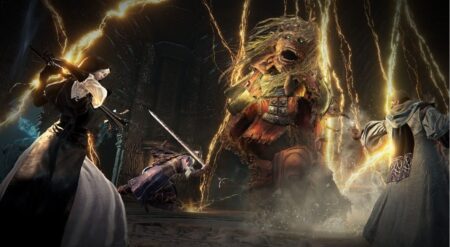Late in the year 2000, I went to a dingy mall in Manila and I bought a game called Romance of the Three Kingdoms 6 for the PlayStation. Back then, I knew nothing about the setting, but I figured the game was worth a try. What followed was countless hours of playing, which eventually led to me becoming a huge Three Kingdoms fan over the years. That brings us to Romance of the Three Kingdoms 8 Remake, which developer Koei Tecmo hopes would revitalize the long-running series.
As someone who has re-read the novel many times, played numerous game adaptations and devoured all sorts of related media, Romance of the Three Kingdoms 8 Remake brings back fond memories. It has the engaging “one more turn” aspect commonly seen in strategy games like the Total War or Civilization franchises, complemented by an excellent cast of characters. Unfortunately, my experience from rising through the ranks as an unknown officer to viceroy and ruler was marred by tedious repetitiveness and some baffling design choices.
For the uninitiated, Romance of the Three Kingdoms (RTK) is based on the novel of the same name. Written by Luo Guanzhong, it recounts heroic tales and dastardly plots from Chinese history–from the gradual decline of the Han Dynasty and the rise of warlords to the establishment of the kingdoms of Cao-Wei, Shu-Han, and Eastern Wu and the eventual domination of the Jin Dynasty.
As for Koei Tecmo’s Romance of the Three Kingdoms series, it can be subdivided into two categories: Those that are more like country management sims and those that are more akin to a role-playing game (RPG). The former includes RTK 6, my initial foray into the franchise, and RTK 11, which remains my favorite. There’s also RTK 14, which we reviewed a few years ago. RTK 8, meanwhile, belongs in the latter category, alongside 7, 8, 10, and 13. Yes, it’s possible to lead your own faction (which I’ll get to in a while), but you’ll also spend a lot of time role-playing as a particular individual.
In my case, I decided to make a custom officer named Jiei Zun (because that sounds a bit like Jason), with high stats and a bunch of combat skills. From there, I picked one particular scenario out of over 50 that are available. I initially opted to be unaligned just to get a feel of what it’s like to be a “freelancer” in Han Dynasty-era China. Needless to say, there was very little that I could do outside of using up my action points to “inquire” in a city and chat with officers via a menu. It was also possible to engage in duels or debates, though both concepts relied on similar mechanics where I simply selected numbered cards.
My conversations with other characters eventually boosted my “Synergy” relationships with them. Along the way, I completed several side quests, which only appeared as event slides, to raise my reputation. Later, I swore an oath of brotherhood with three other officers. Likewise, I was able to get married to three women. (Note that male characters can have up to three wives, whereas female characters can only have one husband.)
The relationship system in Romance of the Three Kingdoms 8 Remake is fairly intricate and detailed. The officers with synergies, including sworn siblings and spouses, also confer link-up bonuses in combat. Moreover, having a rival that challenges you grants more bonuses if you outmatch them, while sworn enemies and antagonistic ones create more conflict if you encounter them.

I genuinely appreciate the inclusion of these mechanics, as they fully flesh out the RPG aspect when building relationships with other officers. Unfortunately, the concept itself is also bogged down by several issues. Firstly, Synergy slots are locked behind your reputation value. Unless a slot is available, you won’t see Synergy increases regardless of how often you talk to people. Similarly, the whole thing feels too random. There were times when I’d trigger a Synergy boost from a conversation and times when nothing would occur. The process also became egregiously repetitive as time wore on.
Lastly, it’s as though my character was the only one actively engaging with this mechanic. All other officers kept their default states for most of my playthrough regardless of how long they’ve been part of someone’s army or the generals that they’ve served with. For example, Guan Yu, a mighty warrior who’s now venerated as a god, has Liu Bei and Zhang Fei as his sworn siblings. They never added a fourth brotherhood member, nor did Guan Yu find other rivals, sworn enemies, or wives. In contrast, Creative Assembly’s Total War: Three Kingdoms actually lets you marry off your characters so they can produce the next generation of loyal retainers.
Eventually, my freelance warrior Jiei Zun joined the forces of Eastern Wu, and we started to “paint the town red” (the faction’s color scheme). This allowed me to try distinct phases in Romance of the Three Kingdoms 8 Remake: City Actions, Parliament, and Battle System.
For City Actions, it meant that I was able to participate in organized tasks for commerce, farming, repairs, and public order, on top of just chatting with various officers via the menu. The Parliament phase, however, was where things got more interesting. As a common officer or governor, I could only propose a plan, such as employing a character, spreading malicious plots in a rival’s territory, transporting troops and resources, and marching to invade a non-allied faction. Admittedly, the restrictions did become a hindrance, though it’s to be expected due to my low rank.
These restrictions also extended to the Battle System, where units move onto hexes in a turn-based affair. I was limited to controlling only my own troops unless I used my “Privilege” (i.e. a bonus resource earned by being the best at tasks like farming or repairs). Once I encountered an opponent, I used many tactics at my disposal, such as devastating area-of-effect (AoE) abilities and linear fire attacks.

Sadly, the AI in Romance of the Three Kingdoms Remake is downright pathetic, often advancing without regard for self-preservation. It led to instances where our armies lost thousands of troops, as other automated units didn’t bother to maximize strategic targets, avoid arrow towers and pitfall traps, or properly determine when to use a general’s abilities.
This also caused a few hilarious situations, such as when my general Zhang Liao–who had a trait that lowered the morale of all enemies whenever he defeated any unit–almost single-handedly routed 200,000 troops. That’s because the AI mindlessly kept throwing every unit at him, even those with depleted numbers, to the point that low morale caused soldiers to desert in droves. It’s as though Zhang Liao recreated his valiant efforts at Hefei due to the AI’s ineptitude.
After a few years of climbing through the ranks, I was eventually promoted to viceroy, which gave me command of multiple territories. I had full control over all units that engaged in battles as long as they’re from my cities. But this also presented yet another problem: AI viceroys barely did anything and I had no means of asking them to conquer neighboring lands independently.
A good example was how the city of Xiapi belonged to Sun Jian, my liege lord. He had 90,000 troops twiddling their thumbs and wasn’t planning to attack neighboring Beihai (held by Cao Cao). In my initial attempt at conquest, I forged ahead by looping around to invade adjacent territories, but my district’s forces became overstretched by the time I reached Beihai.
I then decided to reload my save, and I transported all of Sun Jian’s troops at Xiapi to my own lands. With Xiapi defenseless, AI Cao Cao quickly overwhelmed it, and I immediately retook it. This method was the only way to gain manual control of a city that belonged to an AI ruler or viceroy from the same faction. It’s almost akin to the “Empty City Ruse” from the novel, but a huge oversight becomes an issue in campaigns.
After conquering the rest of China as a viceroy for Eastern Wu, I decided to try to be a ruler. I chose Cao Cao for the 195 AD scenario, one where numerous ambitious warlords all vied for control. When playing as a ruler, not only did I have access to all commands as mentioned earlier, but I could also dictate diplomatic proposals and reassign districts/viceroys. The gameplay was more in line with RTK 6, 11, and 14, especially the macro focus on country management and grand strategy. I quickly eliminated rival warlords, Yuan Shao and Lu Bu, before setting my sights on Liu Bei, Sun Ce, and the rest of the country.

To my surprise, the endings I got–whether I conquered a region as Cao Cao or Jiei Zun–all had the same dialogues about people “letting their hair down” to celebrate. This was followed by the same end credits video. I was genuinely disappointed since I was hoping that the endings would have some notable differences due to the officers involved or the regions that were taken over.
It might sound like I’m nitpicking with regard to certain issues. However, I’ve played close to 90 hours of Romance of the Three Kingdoms 8 Remake, and I still enjoyed it for the most part. The remake is a visual treat, one that combines ideas from the 2001 release with upgraded aesthetics.
The cities themselves look and feel distinct enough, from the foreboding castle walls in the central plains to the desert landscape of the northwest and the jungles of the south. Although I’ve long been immersed in the story and the setting, I was still amazed upon seeing characters come to life with stunning designs and portraits.
Likewise, the core gameplay loop where I befriended officers to maximize relationship boosts, along with planning my next invasions during the Parliament session, created that “one more turn” feeling that kept me glued to my seat for long periods of time. The turn-based battles were also challenging when I faced massive forces–they weren’t as frustrating if I had full control of all units. The interlinked mechanics, from officer bonds to attack and tactical boosts, were downright startling to behold, too.
One thing is for certain: If you’ve been a long-time fan of Three Kingdoms media, then Romance of the Three Kingdoms 8 Remake is one entry in this long-running series that you shouldn’t miss. If you’re a relative newcomer, then things can get a bit overwhelming, and you need to be well aware of potential issues regardless of the officer role that you choose.
Romance of the Three Kingdoms 8 Remake is available on October 23, 2024 via PC on Steam, PlayStation 4|5, and Nintendo Switch.
Romance of the Three Kingdoms 8 Remake
-
Rating - 7/107/10
TL;DR
Romance of the Three Kingdoms 8 Remake resurrects an old fan favorite title from the early 2000s. While it has a shiny new coat of paint and an engaging gameplay loop that’s sure to make long-time fans marvel, it’s nonetheless bogged down by incompetent AI-controlled allies, curious design decisions, and oversights when it comes to core mechanics.








